Pilots Propedeutic Year PCC 2021-2022
There will be three pilots for disciplines connected to Music Theory:
- Music History: weekly lectures for all propedeutic students by Wiebe Buis (check www.skole.nl)
- Music Theory: analysis and harmony, lessons in smaller groups by Wiebe Buis (check www.skole.nl) and Leon Mennen (check www.leonmennen.nl)
- Ear training/solfege : lessons in smaller groups by Wiebe Buis and Leon Mennen
Wiebe Buis: students classical music
Leon Mennen: students Jazz, C&M and Domu
Lesson 1 Introduction
What is analysis?
01. Analyis of form structure and texture
Memorize the key terms!
- Unity, segmentation; repetition, variation, contrast
- drone, ostinato, imitation, variation, figuration, homophony, polyphony, heterophony
Listening example: Saltarello - Guilllaume Dufay
Lesson 2
We compare the first minute of the following two tracks: (Brahms Clarinet trio)
Music and notation: different types of scores and how to read them.
Basic concepts of harmony.
01. Primary and secondary triads, degrees, harmonic functions
Ways of coding/labeling harmony.
Lesson 3
Our first score analysis: Vivaldi
Motivic material and techniques: sequence, chain of dominants, modulation, pivot chord.
Ritornello form is elaborately discussed in AHWM chapter 22.
Basics of four-part setting (SATB), general rules of thumb, voice leading.
Lesson 4
Bach French Suite C minor part 1 (PDF).
Bach French Suite C minor part 1 with annotations (PDF).
Example of a binary form, tonally moving from c minor to the dominant and back.
Following the harmony with chord symbols (above the grand staff) and roman numerals (degrees) when possible (below the grand staff).
Pinpoint cadential formulas, sequences, modulations.
Spotify (Murray Perahia).
Lesson 5
Ludwig van Beethoven(1770-1827)
Sonata Op. 14 nr 2 in G major first movement (PDF)
Spotify link (Murray Perahia)
Auditory analyse
Grieg Holberg Suite: Gavotte-musette-gavotte (Spotify link)
Score analysis
Haydn Sunrise Quartet Second Movement (PDF)
Spoitify link
Contrapuntal music JSB
Contrapunctus I - Kunst der Fuge
Fugue in G minor from Das Wohl Temperierte Klavier I
Fugue in G major from Das Wohl Temperierte Klavier I
See for details analysis examples.
The Rule of the Octave and its importance for understanding common practice harmony.
Video Earlymusicsources.com
LEARNING OUTCOMES YEAR 1 (PROPEDEUTIC YEAR)
The student demonstrates musical awareness by navigating accurately in tonal space and shows awareness of musical time in metre rhythm and timing.
A collection of frequent occuring patterns is memorized and appplied in different contexts. We do this in two dimensions:
- regarding musical space: pitch
- regarding musical time: tempo, metre and rhythm
Patterns:
- fourth-fifth-octave "anchors"
- chord patterns (for example triad framework, arpeggio's)
- scale patterns
- metrical-rhythmical patterns in common time signatures
- partimento patterns and patterns from jazz standards
Lesson material to be acquired: Traplopen en Springstof deel 1 - G Blok. Broekmans en van Poppel.
Lesson 1: Introductory lesson
Anchor intervals
In our tonal/modal music the (pure) octave and fifth play a key role in our orientation in the pitch space.
They are the intervals you shoud internalize. Develop a mental/aural representation that you can summon at any given moment.
Watch the explanation and demonstration in the VIDEO (submenu at the right).
Use the following exercise which contains a pedal (bourdon) as a tool for your orientation.
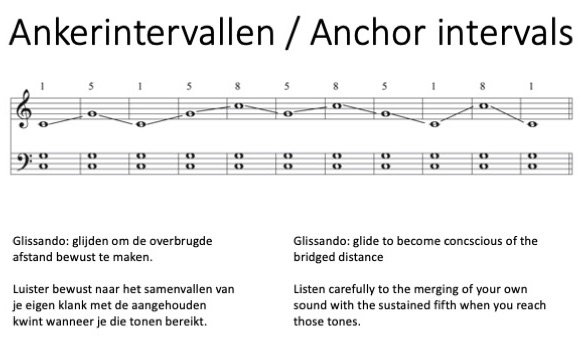
Triadic patterns
Exercise 1: Sing/play the given arpeggio forms of the 4 triads major, minor, diminished, augmented; starting from random pitches.
Note examples:


NB There are no clefs, key signatures or accidentals given, just the placement of the notes on the staff...
Exercise 2: Practice also starting on different pitches while singing note names...
Cognitive exercise 1:
Build all triads from a random note:
- given note is the root
- given note is the third
- given note is the fifth
Level of achievement: correct triad within 5 seconds. Including writing.
Romanesca (our first partimento pattern)

Also in minor... downward natural and upward with raised 6 and 7.
Sing/play all voices/parts in different keys also using note names (when singing).
Exercises in figuration to be added later.
Check also this nice video about the Romanesca created by Elam Rotem, (the guy behind earlymusicsources.com):
Autumn Leaves
Lead sheet JPG
Harmonic pattern A section: Chain of dominants with seventh chords.
(major 7, minor 7, half diminished 7, dominant 7)
Interval pattern outer voices: 3 - 7 - 3 - 7 - 3 - 7 - 3
Common note and voice leading
Exercises:
- Sing all voices/parts.
- Sing the melody while playing the bass line
- Sing the melody while playing the keyboard setting
Keyboard setting of the A section:

Keyboard setting of the B part:
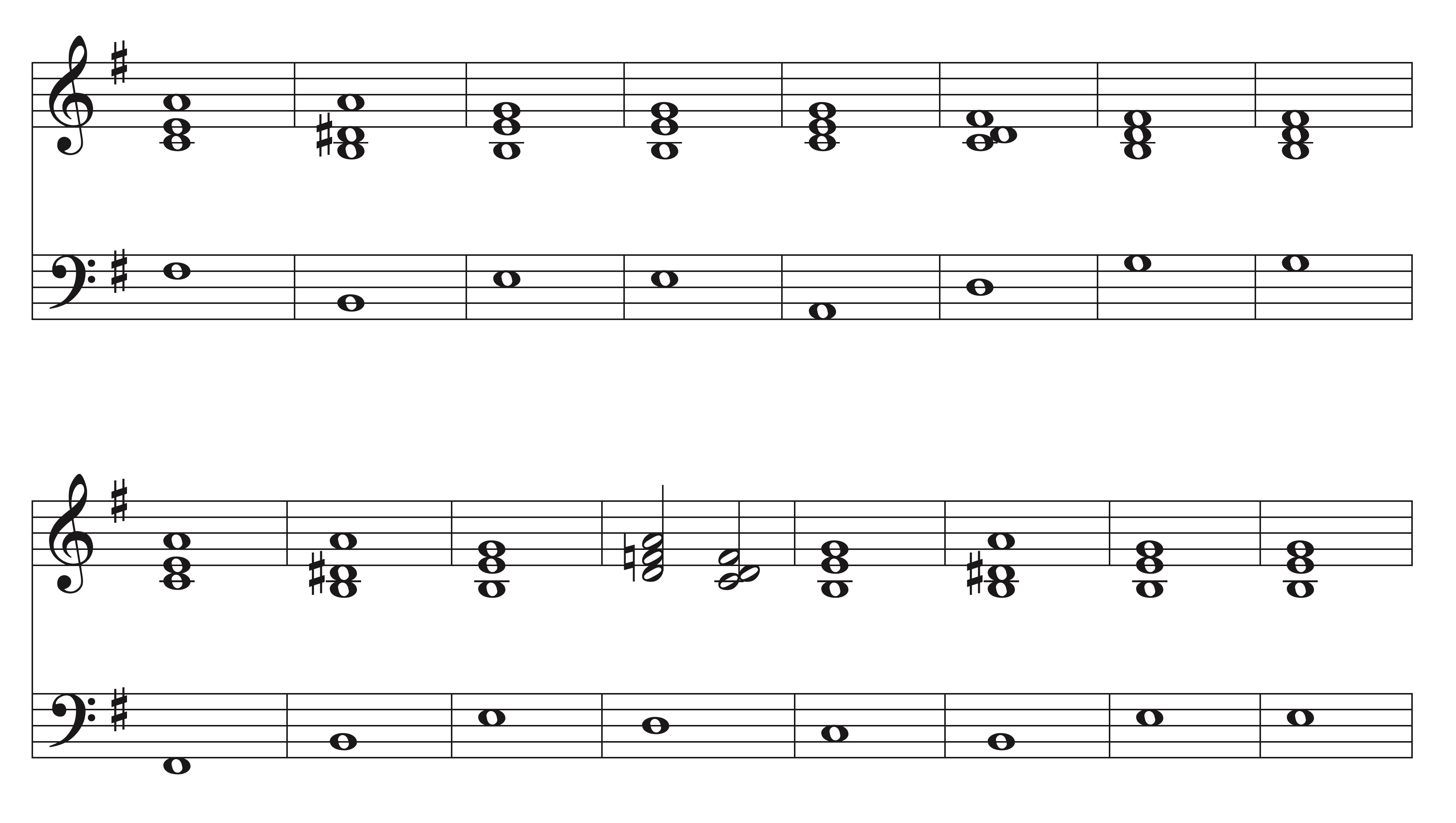
Lesson 2: Navigating in scale patterns
Introduction www.artusimusic.com
Modal scale patterns
The ability to navigate playing/singing fluently and elegantly in diatonic pitch space is indispensible (also without notation).
Watch the explanation and demonstration in the VIDEO (see submenu at the right).
You should be able to sing/play the following modal scale patterns fluently:
- Ionian (= major)
- dorian
- phrygian
- lydian
- mixolydian
- aeolian (=natural minor)
The fifth is the "anchor" of each pattern. You move one step beyond the fifth and one step below the starting note.
Each half step is indicated with a *.
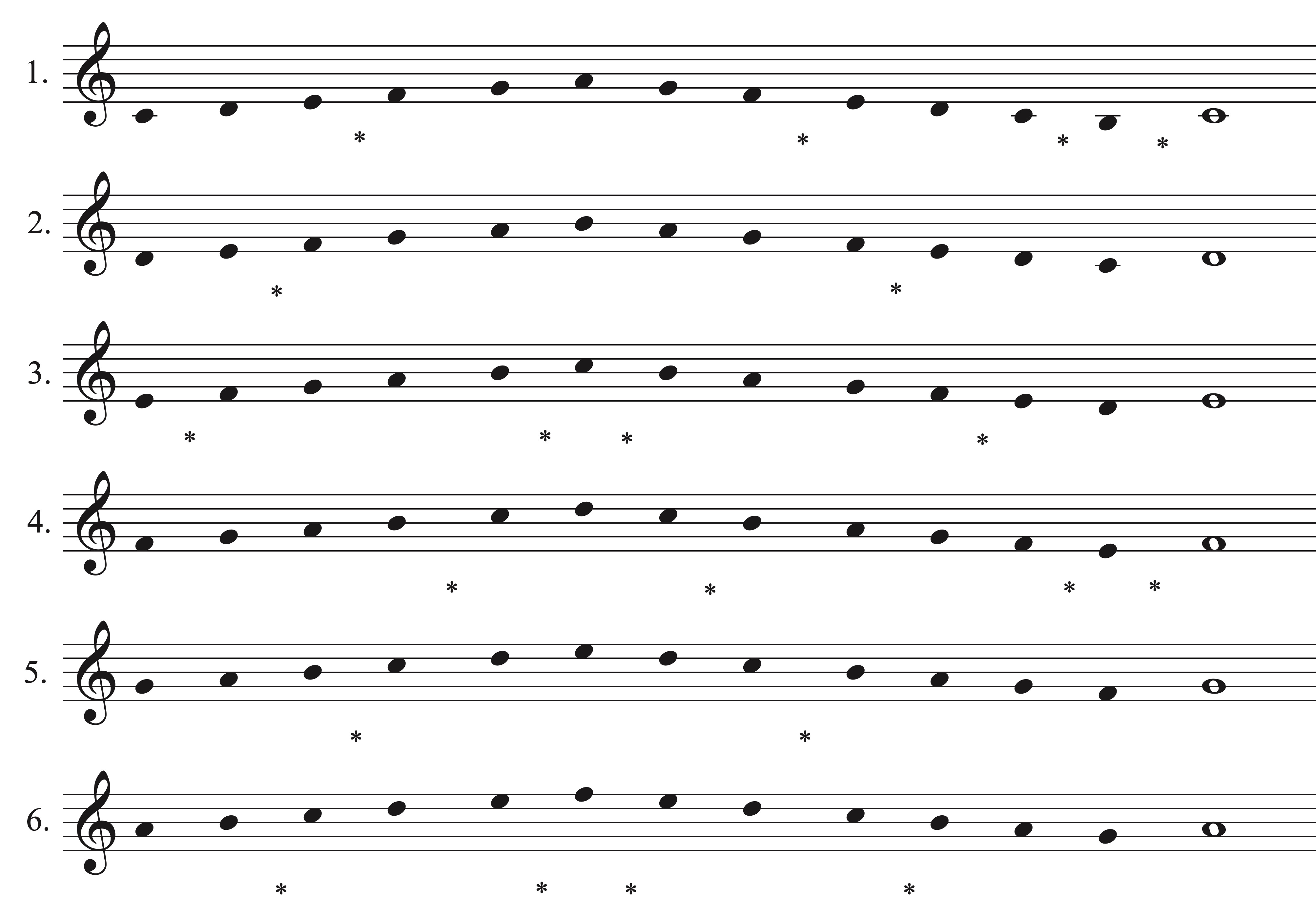
Sing of each also the following pattern: 1-5-6-5-1-7-8
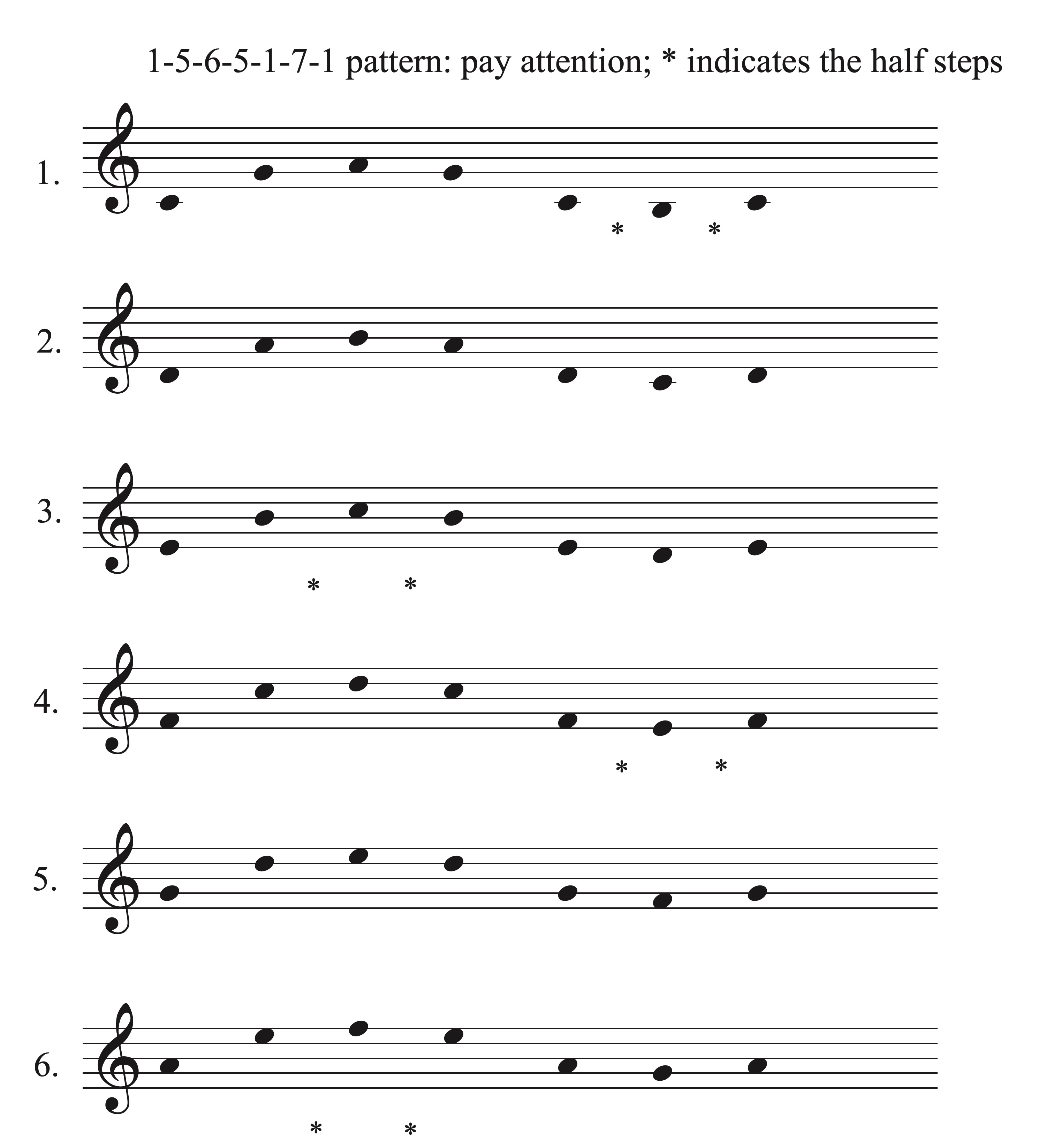
Sing of each also the following pattern: 1-3-5-6-5-3-1-7-1:
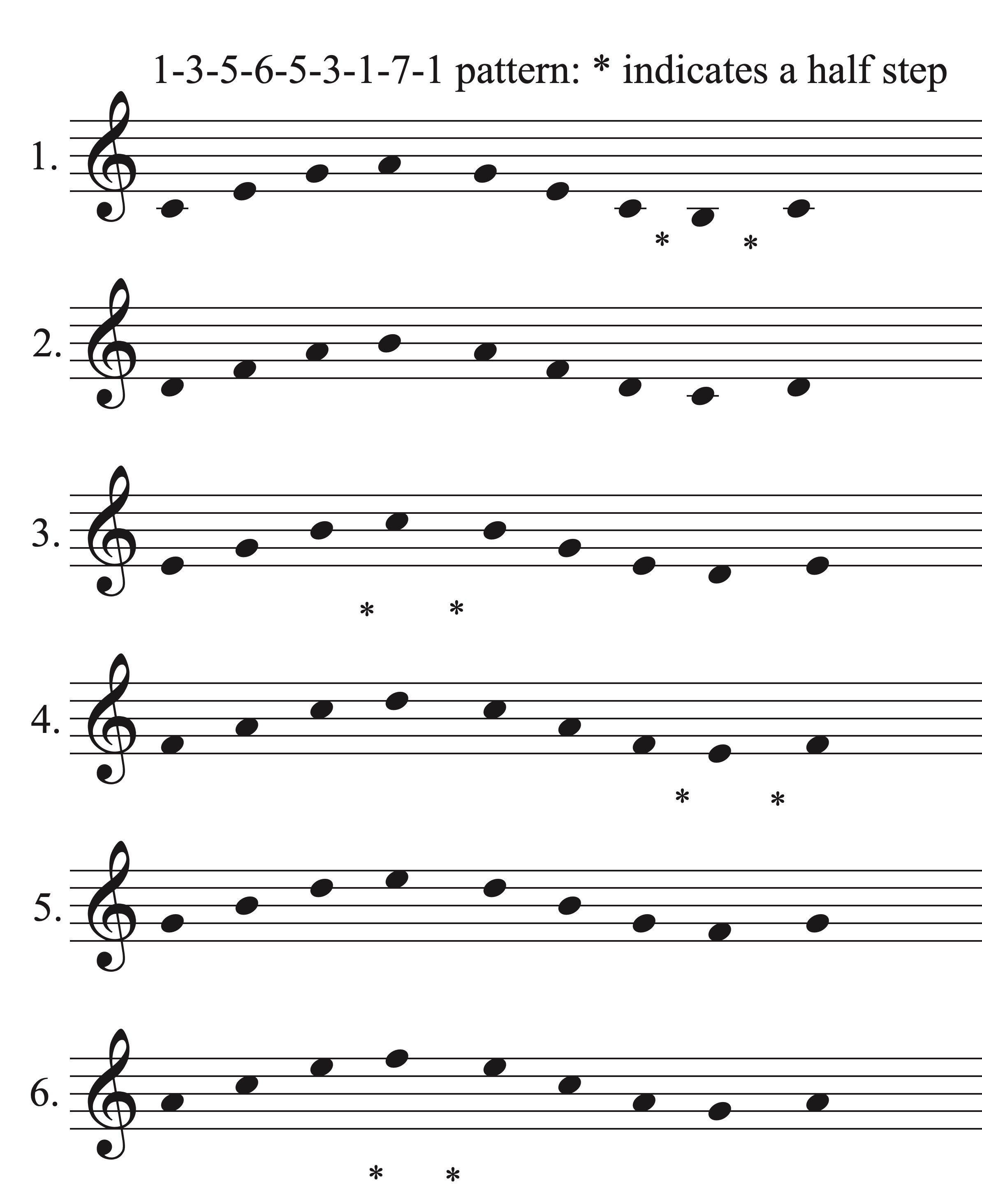
Lesson 3
Hearing outer voices: Vivaldi Stravaganza Op. 4
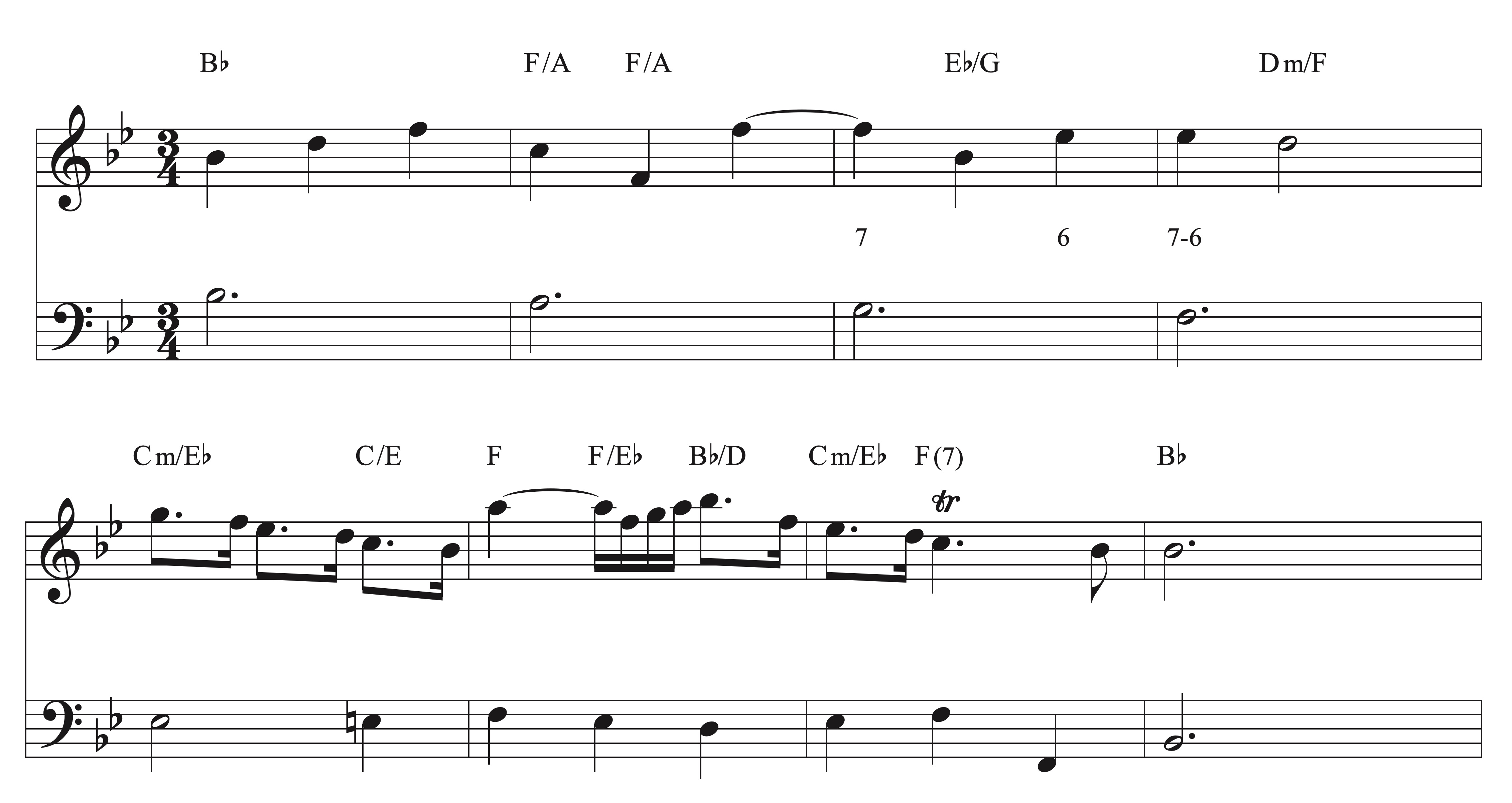
Artusi introduction: www.artusimusic.com
Lesson 4
Additional scale patterns (major/minor)
A new scale pattern:
1-2-1-3-1-4-1-5-1-6-1-7-1-8-1
and
8-7-8-6-8-5-8-4-8-3-8-2-8-1
In major:

and

In minor: ascending "melodic", descending natural/aeolian

and

Traplopen en Springstof:
The seventh chords of autumn leaves, including the B section.
TEST OF THE FIRST SEMESTER
MONDAY, JANUARY 30, 2023 | 14.00 - 15.45 HRS. | AE HALL
CHAPTERS: 7 UP TO AND INCLUDING 19 (RENAISSANCE AND BAROQUE ERA)
January 16 & 23
Test preparation: examples of the different sorts of questions that can be asked.
january 16: 13-19 PDF
january 23: 7-12 PDF
Quesstion types:
- true/false
- short answer
- association question based on picture
- open question (essay like)
Lesson 1
Playlist AHWM 001
Slides Introductory lecture
Lesson 2 RENAISSANCE
Chapter 7 and 8
Art Slides Chapter 7 PDF
Outline chapter 7 PDF
Art slides chapter 8 PDF
Outline chapter 8 PDF
Chapter playlist: Playlist AHWM 10.8
Playlist AHWM 002
Background info about:
Modality PDF
Acoustics, tuning and temperament
Two excellent video's about tuning and temperament in the renaissance by earlymusicsources.com:
Mass and Office PDF
Lesson 3 RENAISSANCE CONTINUED
Chapter 9 and 10
Art Slides chapter 9 PDF
Outline chapter 9 PDF
Chapter playlist: Playlist AHWM 10.9
Art Slides chapter 10 PDF
Outline chapter 10 PDF
Chapter playlist: Playlist AHWM 10.10
Background info about:
Meter and rhythm PDF
An excellent video on mensural notation by earlymusicsources.com.
Lesson 4 RENAISSANCE CONTINUED
Chapter 11 and 12
Outline chapter 11 PDF
Art slides chapter 11 PDF
Chapter playlist: playlist AHWM 10.11
Outline chapter 12 PDF
Art slides chapter 12 PDF
Chapter playlist: playlist AHWM 10.12
Lesson 5 | How to read and study AHWM 10/ Examples of questions you can expect
Working model Studying AHWM
Working model contextual questions
Working model making a mind map or concept map
(Working models also available in Dutch)
AHWM 10.7-12 association pictures (PDF)
While constructing your personal knowledge framework, depart from different perspectives:
- Words (keywords, events, people, years, places, titles, compositions, books, etc. etc.)
- Music (examples from the playlists)
- Pictures (as a starting point for making associations)
- Timelines
October 24 | Lesson 6 | The Baroque era (1600-1750)
Chapter 13 and 14: New styles in the seventeenth century | The invention of opera
Outline chapter 13 PDF
Art slides chapter 13 PDF
Chapter playlist AHWM 10.13
Outline chapter 14 PDF
Art slides chapter 14 PDF
Chapter playlist AHWM 10.14
Opera explained by David Timson: Orfeo - Claudio Monteverdi.
The complete Orfeo by Monteverdi: John Eliot Gardiner - English Baroque Soloists
Early Music Sources on
October 31 | Lesson 7 | The Baroque era (1650-1750) continued
Chapter 15 and 16: Music for chamber and church in the early seventeenth century | France, England, Spain, the New World and Russia in the seventeenth century
Outline chapter 15 PDF
Art slides chapter 15 PDF
Chapter playlist AHWM 10.15
NB 7th Madrigal book (Concerto) by Monteverdi
Giacomo Carisissmi Historia di jephte
Outline chapter 16 PDF
Art slides chapter 16 PDF
Chapter playlist AHWM 10.16
Armide example 16.1 (Youtube)
November 7 | Lesson 8 | The Baroque era (1650-1750)continued and The Eighteenth Century
Chapter 17 and 18: Italy and Germany in the late seventeenth century | The early eighteenth century in Italy and France
Outline chapter 17 PDF
Art slides chapter 17 PDF
Chapter playlist AHWM 10.17
Outline chapter 18 PDF
Art slides chapter 18 PDF
Chapter playlist AHWM 10.18
Video: Sietze de Vries demonstrates the Schnittger organ of the Martini Church in Groningen.
- historical/technical info
- 7'50" praestanten (principals)
- 9'20" holfluit; holfluit + praestant
- 11'32" Oberwerk 4 stops
- 12'20"comparison principals 8vt
- 14'23" combined (coupled) principals 32vt, 16vt, 8vt
- 16'55" soft flutes
- 19'55" reeds
- 22'40" bigger reeds
- 26' buildup to plenum.
November 14 | Lesson 8 | The Eighteenth Century continued
Chapter 19 and 20: German composers of the late Baroque | Musical taste and style i the Enlightenment
Outline chapter 19 PDF
Art slides chapter 19 PDF
Chapter playlist AHWM 10.19
Johann Sebastian Bach (1685-1750)
From Allofbach.com:
Nun komm'der Heiden Heiland BWV 61
Durch Adams Fall BWV 637 (chorale setting)
Wohltemperietrets Klavier I: C minor BWV 847
Also by Belder in playlist.
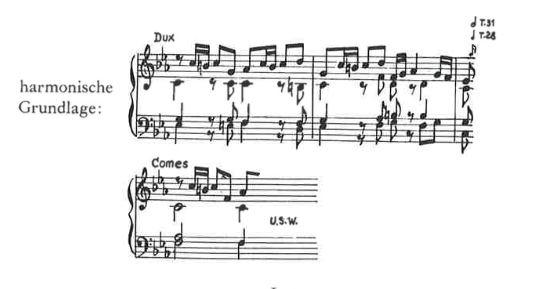
Harmonic background of the theme .
Score from Oxford Music Online PDF
Brandenburg Concerto nr 3 G major from Allofbach.com
Christmas "oratorio" Spotify link
Hohe Messe - Gardiner with English Barooque Soloists & Monteverdi Spotify album
Early Music Sources (.com) on Partimenti
Outline chapter 20 PDF
Art slides chapter chapter 20 PDF
(Chapter playlist AHWM 10.20)
November 21 | Lesson 9 | The Eighteenth Century continued
Chapter 21 and 22: Opera and vocal music in the early Classical Period | Instrumental music: sonata, symphony and concerto
Outline chapter 21 PDF
Art slides chapter 21 PDF
Chapter playlist AHWM 10.19
Outline chapter 22 PDF
Art slides chapter chapter 22 PDF
Chapter playlist AHWM 10.22
November 28 | Lesson 10 | The Eighteenth Century continued / The Nineteenh Century
Chapter 23 and 24: Classical in the late eighteenth century | Revolution and change
Outline chapter 23 PDF
Art slides chapter 23 PDF
Chapter playlist AHWM 10.23
Outline chapter 24 PDF
Art slides chapter chapter 24 PDF
Chapter playlist AHWM 10.24
December 5 | Lesson 11 | The Nineteenh Century continued
Chapter 25 and 26: The romantic generation: song and piano music | Romanticism in classical forms: choral chamber and orchestral music
Outline chapter 25 PDF
Art slides chapter 25 PDF
Chapter playlist AHWM 10.25
Outline chapter 26 PDF
Art slides chapter chapter 26 PDF
Chapter playlist AHWM 10.26
December 14 projectweek 2
December 19 consultation week & catch up opportunity
The first lessons after the christmas holiday will be used for questions about the coming test (see top of this page) and catching up with some chapters we didn't cover despite our plans.
January 9 | Chapter 22 Instrumental music: sonata, symphony and concerto
Chapter playlist AHWM 10.22
Important topics: forms at a glance: binary forms and its relatives (page 500, 501, 512)
Score Piano Concerto Joh. Chr. Bach Op. 7 nr. 5 PDF
Outline chapter 22 PDF
Art slides chapter chapter 22 PDF
Chapter 23 Classic music in the late 18th century
Chapter playlist AHWM 10.23
Important topics: development towards the late classical sonata style and sonata forms, the careers of Haydn and Mozart compared.
Score Haydn Symphony nr. 88 PDF
Outline chapter 23 PDF
Art slides chapter 23 PDF
January 16 & 23
Test preparation: examples of the different sorts of questions that can be asked.
january 16: 13-19
january 23: 7-12
Quesstion types:
- true/false
- short answer
- association question based on picture
- open question (essay like)
Renaissance and Baroque era
Chapters: 7-12
Chapters 13-18
comment on pictures from the book
general comment on played musical examples fom the playlists
know and understand key terms: (bold in text)
red printed terms and key words in the margin
Videos monday january 17



